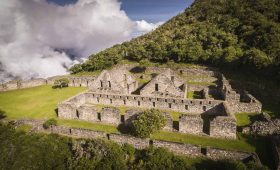Palmyra: A Journey Through Time in Syria
History and Cultural Significance
Palmyra, an ancient city in Syria, is steeped in history that stretches back to the Neolithic period. It rose to prominence as a caravan oasis during the 1st and 2nd centuries AD, serving as a major trading hub along the Silk Road. The city flourished under the Roman and Byzantine empires, showcasing a unique blend of Roman, Persian, and Arab influences in its architecture and culture. Recognized as a UNESCO World Heritage site, Palmyra’s ruins are a testament to its historical significance, though much of this heritage was tragically damaged during the armed conflict in 2015.
Exploring the Ruins
Despite the destruction, Palmyra’s ruins remain a powerful draw for those interested in history. Key sites include the Temple of Bel, the Great Colonnade, and the Palmyra Castle, which, although damaged, still stands. The Roman Theatre and the funerary towers also offer glimpses into the past. While mines have been cleared by Russian forces, caution is advised as not all areas may be safe. The Lion of Al-lāt, restored in 2017, can now be seen at the National Museum of Damascus.
Best Time to Visit
Visiting Palmyra requires careful planning. The best times are during the spring (March to May) and fall (September to November) when the weather is mild. However, access to Palmyra requires special permission as of April 2019, and the area is not currently a tourist destination due to safety concerns.
How to Get There
Reaching Palmyra used to be straightforward with buses running from Damascus, Homs, and Deir-az-Zur. However, current travel restrictions and safety issues mean that visiting requires special arrangements and permissions. For those determined to visit, it is crucial to stay updated on the latest travel advisories and obtain the necessary permissions.
Local Transportation
Once in Palmyra, walking is the best way to explore the compact archaeological site. The town’s layout reflects a time when walking was the primary mode of transport. Camel rides are available for a unique experience, and local tour buses can be an option if you negotiate well.
Accommodation
Accommodation options in Palmyra are limited. Before the conflict, small guesthouses and budget hotels offered basic amenities. Currently, it’s essential to verify the availability and safety of accommodations before planning a visit.
Local Cuisine
Syrian cuisine is rich and varied, with dishes like hummus, falafel, kebabs, and baklava. While in Palmyra, traditional dishes such as kibbeh, fattoush salad, and maamoul were popular. However, due to current conditions, dining options may be limited, and it’s advisable to plan meals accordingly.
Practical Tips
- Palmyra is not currently a typical tourist destination due to safety concerns and access restrictions.
- Much of the historical site has been damaged, but some structures remain partially intact.
- Travel requires special permission, and it’s crucial to stay informed about the latest safety advisories.
- Walking is the best way to explore the ruins, but be mindful of the heat and plan visits during cooler parts of the day.
- Accommodation and dining options are limited; verify availability and safety before traveling.




